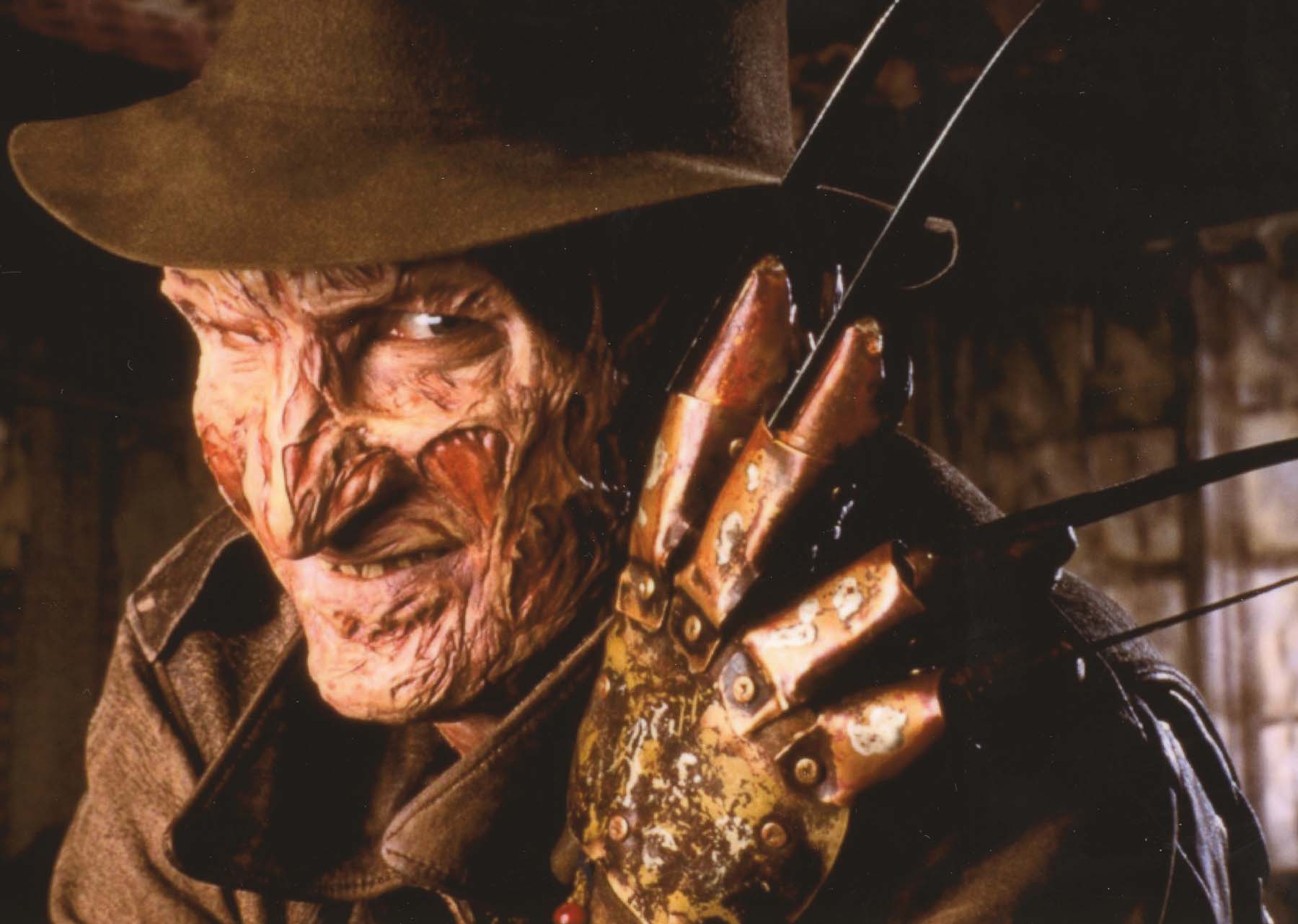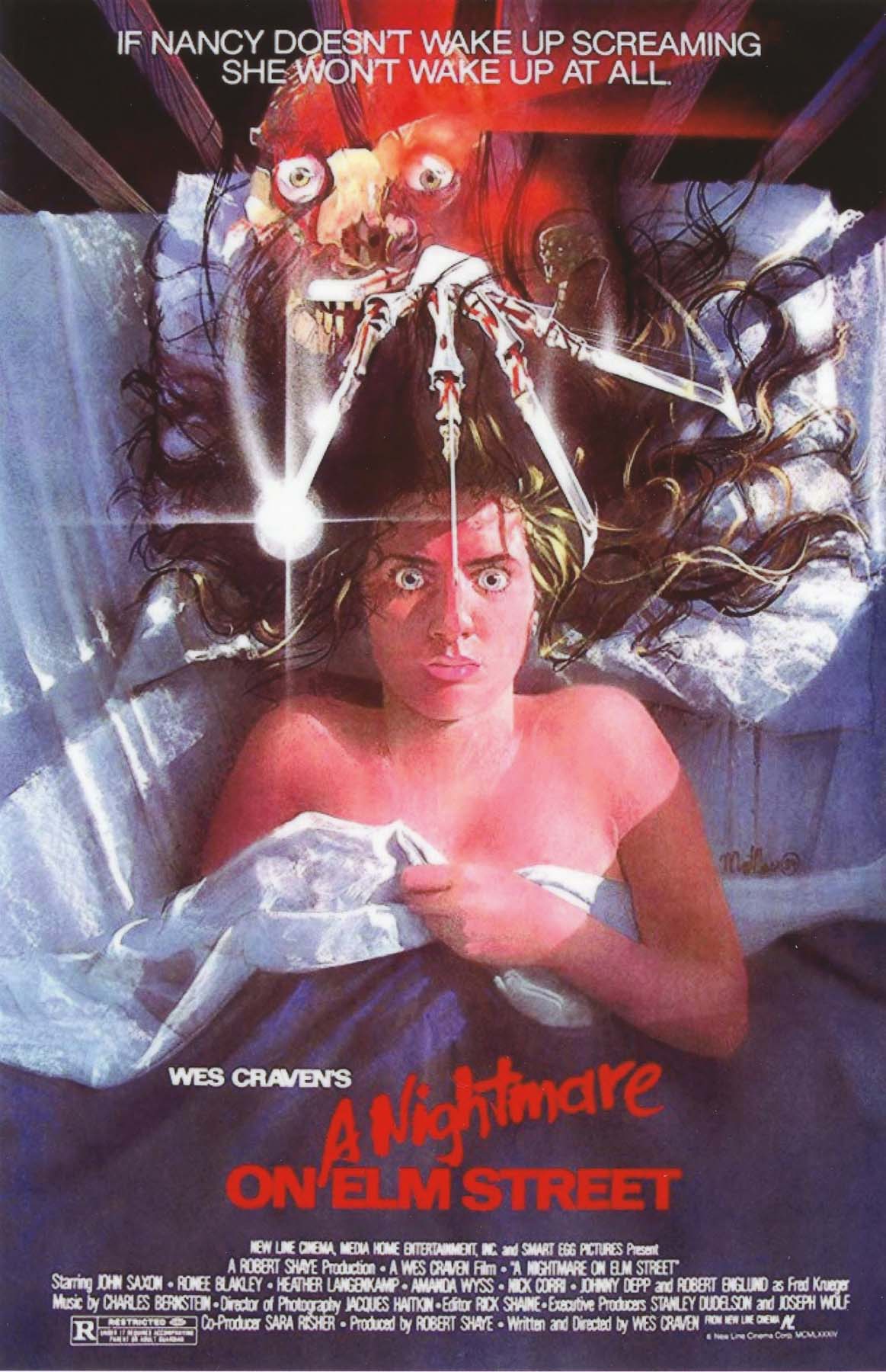AND IF YOU DIE BEFORE YOU WAKE… YOU’VE PROBABLY MET FREDDY.
Horror movies frequently depict nightmares in the course of their stories, but it is much rarer for a film to serve nightmares as the main course. In A Nightmare on Elm Street, the first installment of a highly successful franchise including nine feature films and two television series, we are reminded of the ancient link between nightmares and the tropes of modern horror. The medieval incubus and succubus were dream demons who sexually attacked their victims during sleep, draining their life energy in the process. Folklorists often cite the incubus/succubus legend as a major source of all things vampiric. The closely related “old hag” phenomenon, involving sleep paralysis and the vision of a horrible crone straddling and immobilizing the sufferer, is an occurrence well-known to sleep researchers. And bad dreams in general have been regarded as omens from antiquity.
Freddy Krueger (Robert Englund), the resident bogeyman of the Elm Street franchise, is an updated version of an incubus: a consummate demon, but one with a dreamy twist. Instead of lurking in closets or shadows, Freddy stalks his victims in their dreams, a place where he has the power to actually kill. Have a nightmare about Freddy, and it’s possible you won’t wake up.
In the quiet, tree-lined town of Springwood, Ohio, the parents share a secret. Freddy Krueger was a notorious local child killer who got off on a technicality, infuriating the adults and inciting them to vigilante justice. They burn Freddy alive and never pay for their crime. Freddy has his own revenge, however, and begins entering their children’s dreams with gruesomely fatal results. Freddy appears to his victims bearing hideous burn scars, a ratty striped sweater and battered fedora, and his trademark weapon: a leather glove, the fingers and thumb tipped with steak-knife blades. In the first film, Johnny Depp (in his screen debut) falls asleep and immediately is swallowed up and literally pureed by his bed, a geyser of blood shooting up as if from an uncovered blender. For the first television broadcasts, the bed vomited dry bones instead.

Robert Englund as Freddy Krueger

Freddy’s primary targets in the first film are Nancy Thompson (Heather Langenkamp) and her circle of friends, who are apparently being picked off to scare Nancy all the more. After all, her mother, Marge (Ronee Blakley), was one of the ringleaders of Freddy’s fiery lynching. While Nancy is taking a bath, Freddy’s finger-blades break the surface of the water like a shark fin. When he harasses her on the phone, the bottom half of the receiver turns into a tongue that tries to French kiss her. These pranks aside, in his first incarnation Freddy is fairly grim, but as the franchise gets rolling, he finds his more ideal level as a sardonic spook, not unlike the wisecracking Crypt-Keeper of EC Comics fame. Robert Englund wasn’t the first choice for the role; he replaced the originally cast David Warner (The Omen), who became unavailable, but Englund certainly made the part his own. Director Craven has said that a partial inspiration for the character was an actual schoolyard bully named Fred Krueger who tormented Craven as a child.
At first, Craven had no plans for a sequel, but the original film’s twisty, is-it-real-or-not denouement left the door wide open for more. A Nightmare on Elm Street 2: Freddy’s Revenge (1985) was a stand-alone follow-up, without any of the original cast and not directed by Craven. He did, however, return to helm one of the best installments of all, A Nightmare on Elm Street 3: Dream Warriors (1987), in which Freddy came into his own as a macabre jokester. The series kept rolling with A Nightmare on Elm Street 4:The Dream Master (1988), A Nightmare on Elm Street 5: The Dream Child (1989), Freddy’s Dead: The Final Nightmare (1991), and Wes Craven’s New Nightmare (1994), in which Heather Langenkamp returned to play herself in a clever meta-narrative in which the film and its making blur into a single scary story. Freddy vs. Jason (2003) blended two franchises, and the film series concluded with A Nightmare on Elm Street (2010), a remake of the original, without Robert Englund.